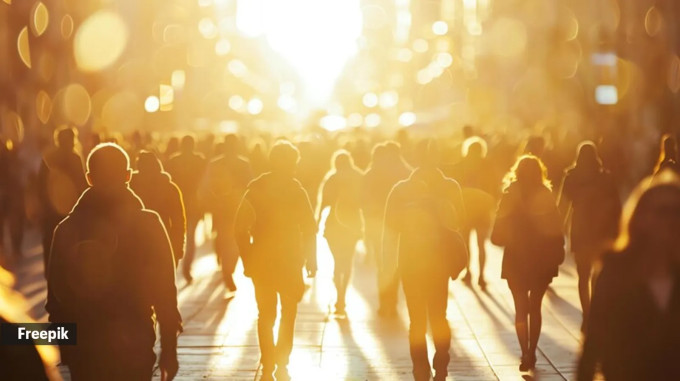Man dies of suffocation and several others injured as millions gather during Rath Yatra in Puri; how to stay safe when visiting popular places of worship
The recent tragedy at the Puri Rath Yatra, where a man lost his life due to suffocation amidst massive crowds, serves as a stark reminder of the potential dangers lurking in popular religious gatherings and festivals.
According to a report by indianexpress.com, a devotee died of suffocation while pulling the chariot of Lord Balabhadra during the annual Rath Yatra in Odisha’s Puri on Sunday. A million devotees from across the globe are in the temple town for the festival. The man, who is yet to be identified, was rushed to the Puri district headquarters hospital, where doctors declared him dead on arrival, it added. Many others are reported to have been injured in a stampede-like situation.

As devotees from across the globe flock to sacred sites this season, this unfortunate incident highlights the critical need for awareness and caution.
While spiritual events offer profound experiences and cultural richness, the sheer volume of attendees can create hazardous conditions, particularly in areas with limited crowd management infrastructure.
State health minister Mukesh Mahaling said, “We are trying to ascertain the identity of the deceased. I have personally monitored the health infrastructure and directed the hospital authorities to be ready to ensure proper healthcare to the injured.”
Primary safety risks associated with large gatherings
Dr Narayanaswamy S, founder and medical director at Athreya Super Speciality Hospital, “Large gatherings at places of worship and festivals like the Puri Rath Yatra are undeniably vibrant and culturally rich experiences. However, it’s crucial to acknowledge the inherent safety risks associated with such massive crowds. Overcrowding, especially in confined spaces, can lead to a range of hazards.”
Crowd Crush: In extreme cases, the pressure of a surging crowd can cause people to be crushed or trampled, leading to serious injuries or even fatalities.
Suffocation: Limited oxygen and the inability to breathe freely due to overcrowding can lead to suffocation, a potentially life-threatening condition.
Heatstroke: In hot and humid weather, large crowds can exacerbate the risk of heatstroke, a serious condition characterised by elevated body temperature and potential organ damage.
Dehydration: Dehydration can occur quickly in crowded conditions, especially when access to water is limited or challenging.
 In hot and humid weather, large crowds can exacerbate the risk of heatstroke (Source: Freepik)
In hot and humid weather, large crowds can exacerbate the risk of heatstroke (Source: Freepik)
Injuries from Falls or Stumbles: Uneven terrain, obstacles, and the sheer density of the crowd can increase the risk of trips and falls, resulting in injuries.
To safeguard yourself in such environments, Dr Narayanaswamy says, constantly assess your surroundings and be mindful of exits and potential escape routes. Carry a water bottle and drink fluids regularly to prevent dehydration.
“Choose loose-fitting, breathable clothing and comfortable footwear to avoid overheating and blisters. Steer clear of areas where crowds are particularly dense or where there’s limited space to move,” he adds. If you’re attending with others, establish a meeting point in case you get separated.
Understanding suffocation and crowd-related incidents
According to Dr Narayanaswamy, suffocation in crowded settings often results from “compressive asphyxia, where external pressure on the chest restricts breathing.” This can occur when people are packed too tightly together, leaving them unable to expand their chests to inhale.
Other contributing factors include:
Panic and Fear: In a crisis, panic can lead to irrational behaviour, further exacerbating crowd crush and increasing the risk of suffocation.
Lack of Crowd Control: Insufficient crowd management measures, such as barriers or designated pathways, can contribute to overcrowding and dangerous situations.
Inadequate Exits: Limited or poorly marked exits can make it difficult for people to evacuate quickly in an emergency.
If you find yourself caught in a suffocating crowd, try to stay calm. “Panic can worsen the situation. Take deep breaths and try to remain as calm as possible,” says Dr Narayanaswamy.
If possible, he adds, try to create some space around your chest by placing your arms in front of you to form a barrier. “Avoid struggling or pushing against the crowd, as this can quickly deplete your energy. If you can, alert those around you and try to work together to create space or move towards an exit.”
Ensuring safety at large-scale events: The role of organisers and authorities
Event organisers and local authorities have a crucial role in ensuring the safety and well-being of attendees at large-scale festivals and religious gatherings, asserts Dr Narayanaswamy. This involves:
Crowd Management: Implementing effective crowd control measures, such as designated entry and exit points, barriers to manage flow, and sufficient security personnel to monitor the crowd.
Emergency Preparedness: Developing and communicating clear emergency evacuation plans, including designated assembly areas and procedures for handling medical emergencies.
Medical Facilities: Providing on-site medical facilities equipped to handle a range of medical emergencies, including those related to crowd crush and heatstroke.
Communication: Establishing clear communication channels between organisers, security personnel, and attendees, and regularly broadcasting safety messages and updates.
Environmental Considerations: Taking into account weather conditions, terrain, and potential hazards when planning the event layout and ensuring adequate access to water and shade.
Disclaimer: The copyright of this article belongs to the original author. Reposting this article is solely for the purpose of information dissemination and does not constitute any investment advice. If there is any infringement, please contact us immediately. We will make corrections or deletions as necessary. Thank you.

